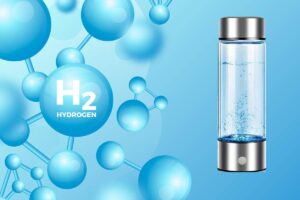Introduction
When a patient is in need of hydration, it is not just about drinking water or receiving IV fluid; it’s about what is happening at the cellular level. Medical professionals must understand which type of solution the patient’s cells are in because the movement of water in and out of cells directly determines recovery, organ function, and even survival.
The most common scenario in dehydration is that the patient’s cells are in a hypertonic solution, meaning the fluid outside the cells has a higher concentration of solutes (like sodium) compared to the fluid inside. This imbalance forces water to leave the cells, shrinking them and impairing normal function.
This article explores hydration from a medical and biological perspective: hypertonic vs isotonic vs hypotonic solutions, how they affect cells, what happens during dehydration, and how medical interventions restore balance.
Osmosis: The Science Behind Cellular Hydration
To understand hydration, we first need to understand osmosis — the natural movement of water across a semipermeable membrane (like the cell membrane).
- Hypertonic solution: Higher solute concentration outside the cell → water moves out → cell shrinks (crenation).
- Isotonic solution: Solute concentration is equal inside and outside → water moves equally → cell size stays normal.
- Hypotonic solution: Lower solute concentration outside the cell → water moves in → cell swells and may burst (lysis).
So, when a patient is dehydrated, the extracellular fluid becomes hypertonic, pulling water out of the cells. This explains why the patient needs rehydration therapy to restore balance.
Caption: Types of solutions affecting cell hydration: isotonic, hypotonic, and hypertonic.
A Patient in Need of Hydration: Which Solution Applies?
When we say a patient is “in need of hydration,” it often refers to dehydration caused by fluid loss (vomiting, diarrhea, sweating, burns, or inadequate intake). In such cases:
- Cells are most likely in a hypertonic solution.
- Water moves out of the cells into the extracellular fluid.
- This causes cellular shrinkage, impairing processes like metabolism, nerve conduction, and muscle contraction.
For instance, in severe dehydration, sodium levels in the blood rise (hypernatremia). This makes the extracellular fluid even more concentrated, drawing water away from cells and making them dysfunctional.
Medical Implications of Hypertonic Cells
When a patient’s cells are in a hypertonic state due to dehydration, the following complications may occur:
- Neurological symptoms: Confusion, seizures, irritability due to brain cell shrinkage.
- Muscle weakness: Shrinking cells cannot maintain normal electrolyte exchange.
- Organ dysfunction: The kidneys and heart are stressed as they attempt to restore balance.
Understanding that the cells are in a hypertonic environment guides clinicians in choosing the correct hydration solution, not just “more water,” but the right type of fluid.
Also read: Hydrogen Water Benefits: The Science, Myths, and Real Health Impacts
The Role of IV Solutions in Hydration
Not all IV fluids are the same. Doctors choose the type of solution based on the patient’s condition:
- Isotonic solutions (e.g., Normal Saline, Lactated Ringer’s)
- Restores hydration without disturbing electrolyte balance.
- Best for general dehydration and blood volume restoration.
- Restores hydration without disturbing electrolyte balance.
- Hypotonic solutions (e.g., 0.45% saline, Dextrose 5% in water)
- Used when extracellular fluids are too concentrated.
- Helps rehydrate cells by moving water back inside.
- Risk: Too much can cause cells to swell dangerously.
- Used when extracellular fluids are too concentrated.
- Hypertonic solutions (e.g., 3% saline)
- Rarely used for general hydration.
- Instead, used for conditions like brain swelling, where fluid needs to be pulled out of cells.
- Rarely used for general hydration.
In most dehydrated patients, isotonic or hypotonic IV fluids are used to carefully restore cellular hydration.
Example Scenario: A Dehydrated Patient in KP/GB
Imagine a patient in Gilgit-Baltistan experiencing severe dehydration from gastroenteritis. Clinically, they present with:
- High sodium levels,
- Low urine output, and
- Dry mucous membranes.
Here, the patient’s cells are in a hypertonic state. Administering isotonic saline would first stabilize blood circulation. Once stable, a hypotonic solution may be introduced to rehydrate cells gradually and safely.
Preventing Hydration Imbalances
While IV solutions treat hydration emergencies, prevention is key. Doctors emphasize:
- Regular hydration (drinking water throughout the day).
- Balanced electrolytes (oral rehydration salts in diarrhea cases).
- Monitoring at-risk groups (elderly, children, athletes, and patients with chronic illnesses).
By maintaining hydration proactively, the risk of cells entering dangerous hypertonic states is reduced.
Also read: All About Hydrogen Water: Benefits, Science, and Myths Uncovered
Key Takeaways
- When a patient is in need of hydration, their cells are most likely in a hypertonic solution due to dehydration.
- This condition forces water out of cells, shrinking them and impairing function.
- Isotonic and hypotonic solutions are used in treatment to restore balance and rehydrate cells safely.
- Understanding cellular osmosis helps clinicians prevent complications like seizures, organ failure, or death.
Conclusion
The phrase “a patient is in need of hydration. Which type of solution are the patient’s cells most likely in?” leads us to a vital biological truth: dehydration creates a hypertonic cellular environment. Water leaves the cells, threatening vital processes.
By applying principles of osmosis, fluid therapy, and clinical hydration strategies, medical professionals can save lives. Whether through isotonic IV solutions, oral rehydration, or preventive hydration habits, restoring balance at the cellular level remains the cornerstone of effective patient care.
Hydration is more than quenching thirst — it is about preserving cellular life.



